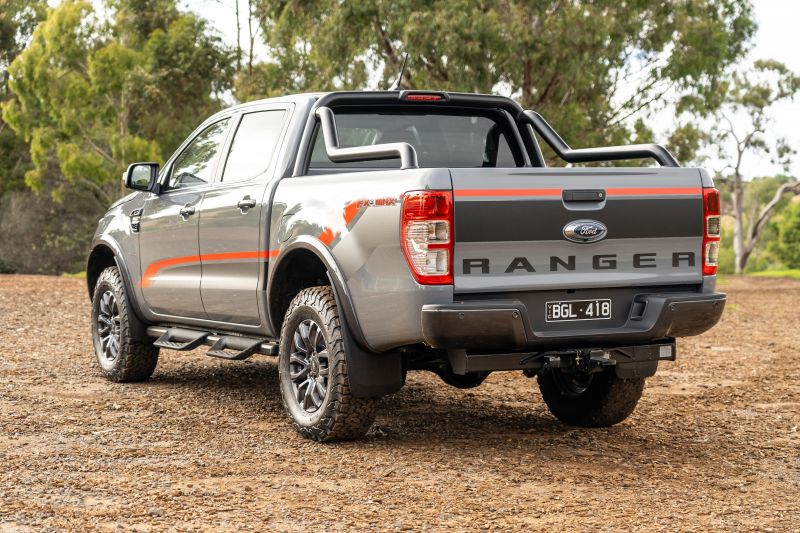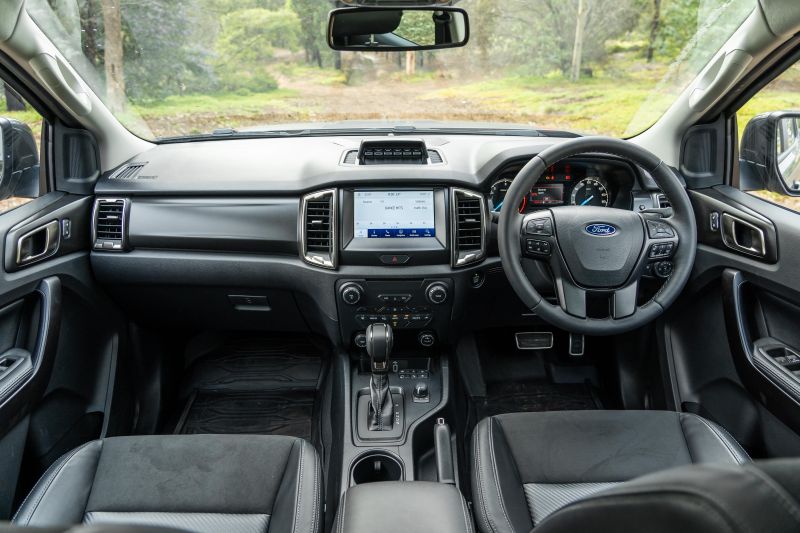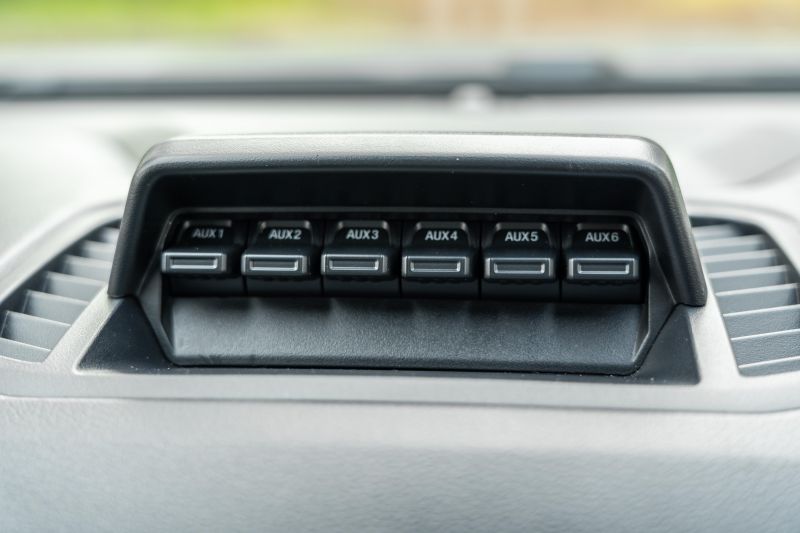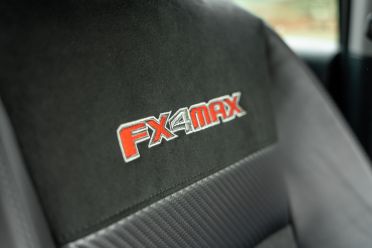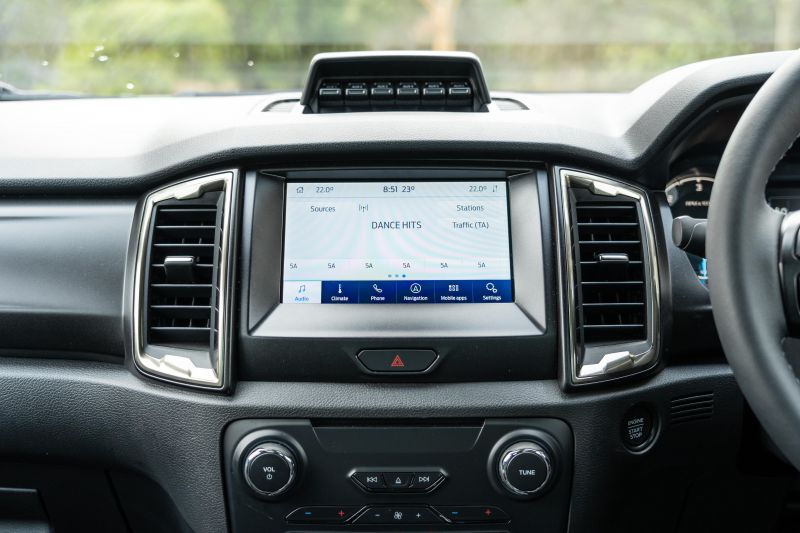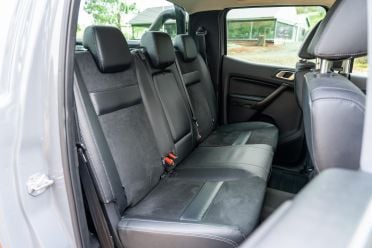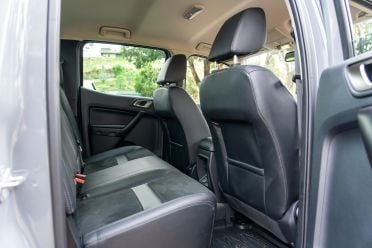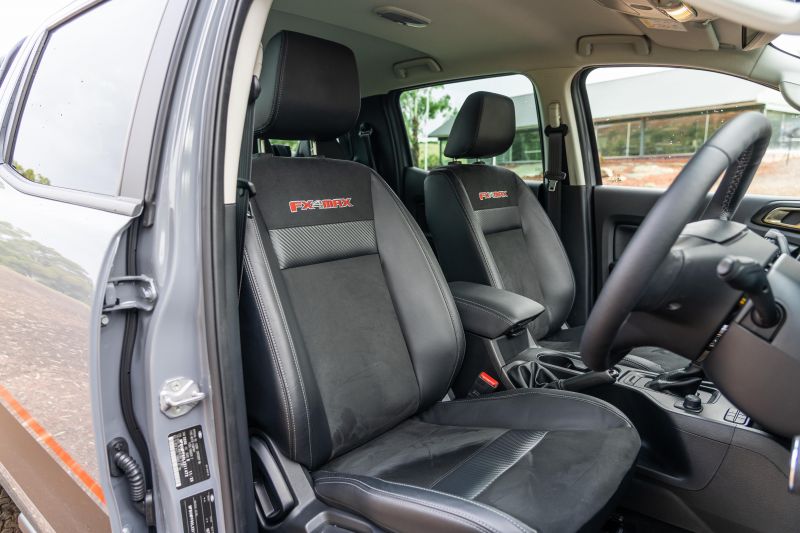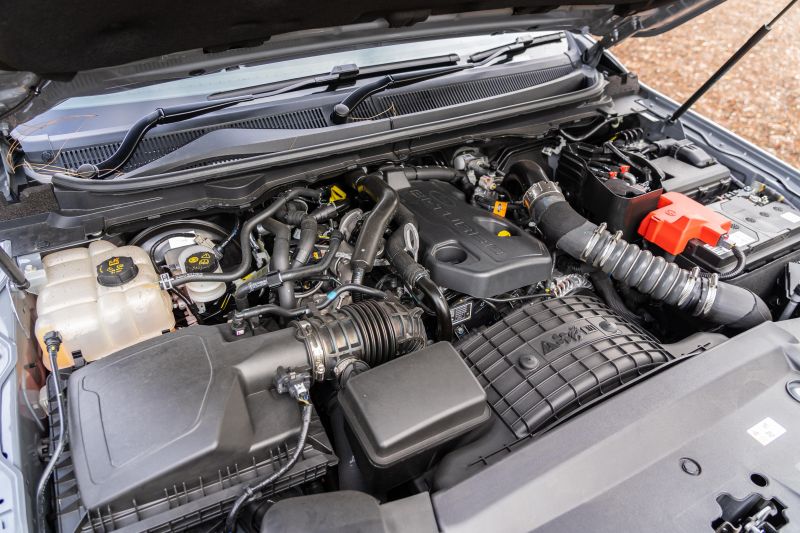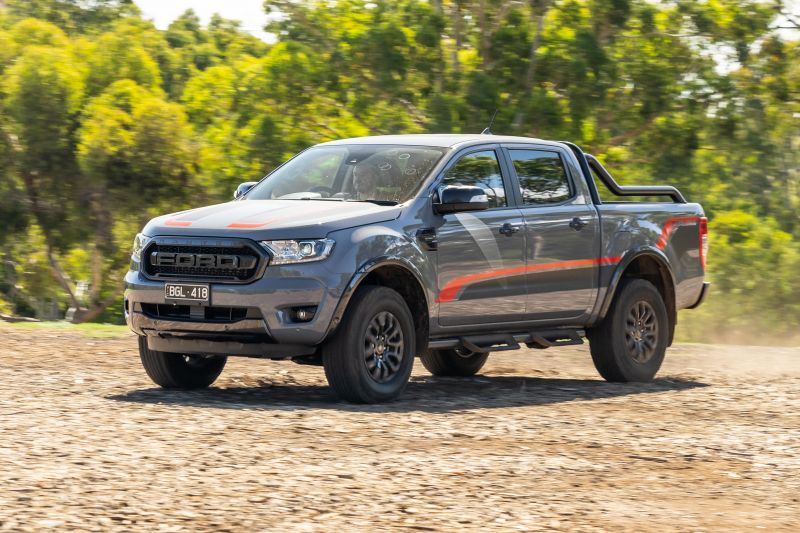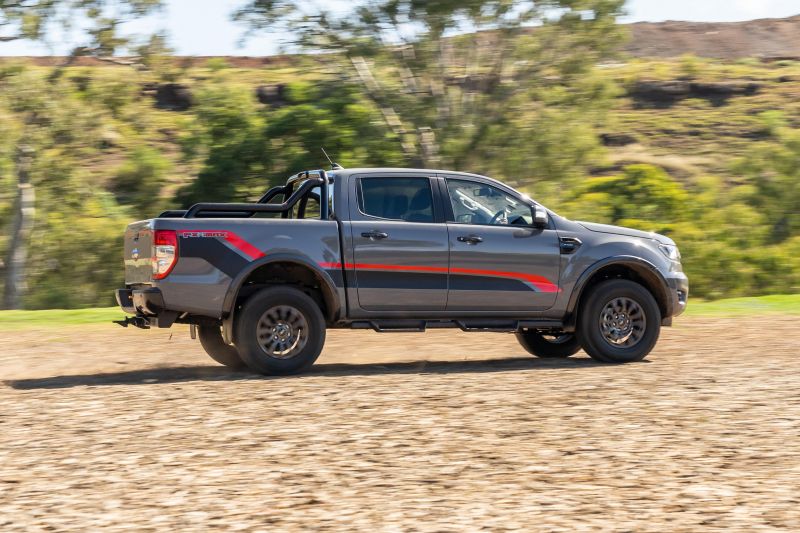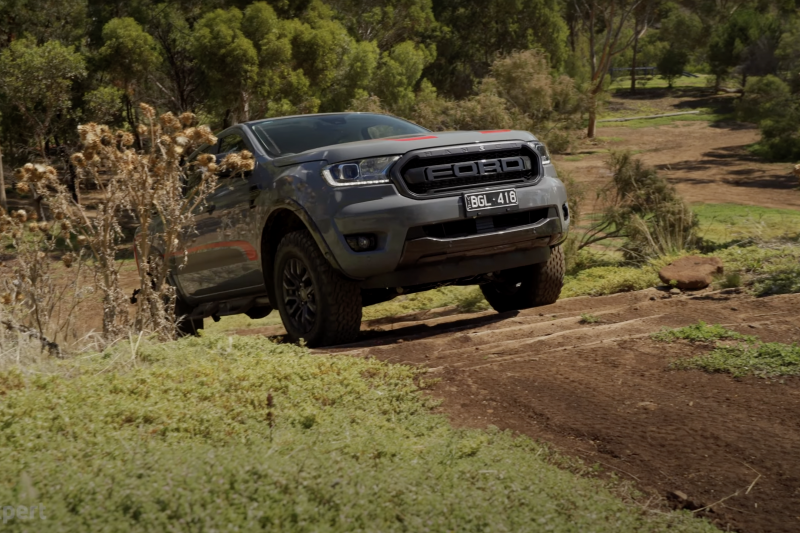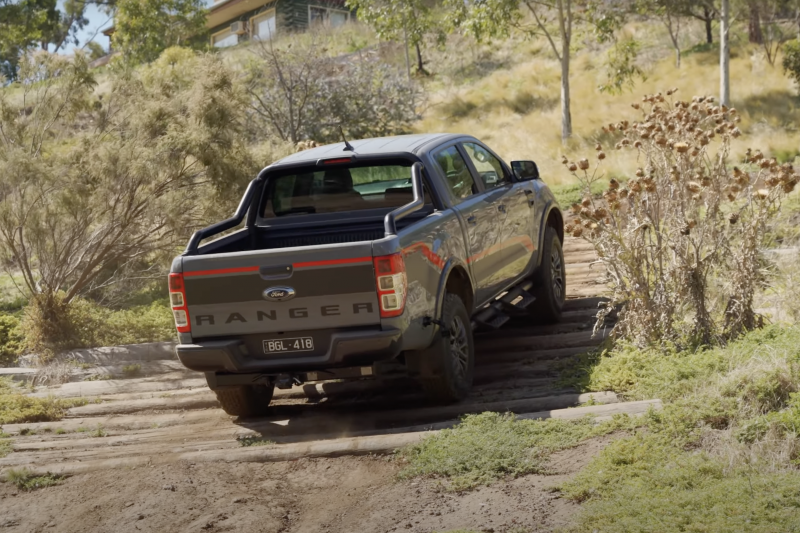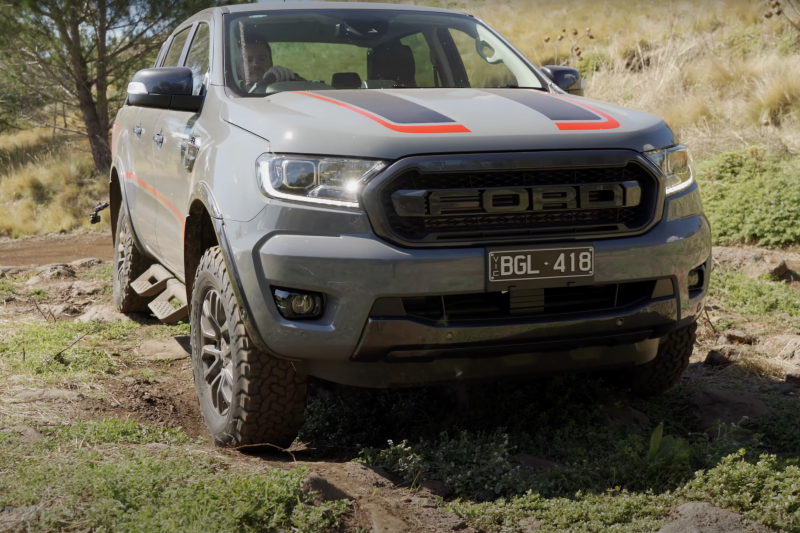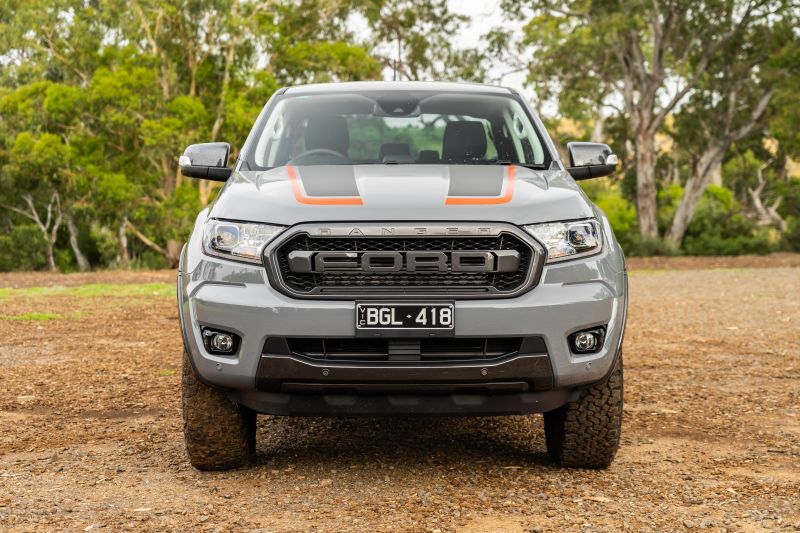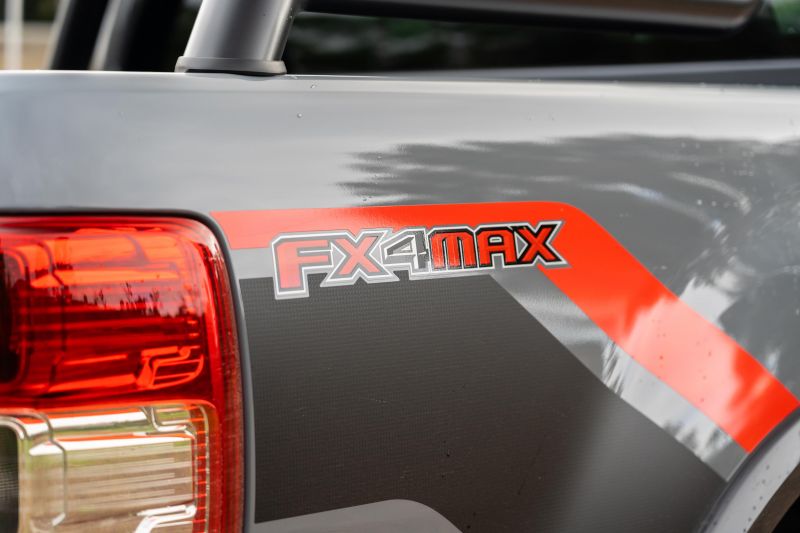It’s a dilemma we all face on a daily basis: you want a dual-cab ute capable of doing jumps, but you also need to haul almost a tonne of cement and tow 3500kg.
Ford has an answer for you, in the form of the 2021 Ford Ranger FX4 Max. It borrows from the the Baja-tailored Ranger Raptor, but retains the load-hauling capabilities of the more mundane of the Ranger line-up.
That’s a tough brief to match. Does the Ford Ranger FX4 Max manage?
We hit the road to see how it performs across a variety of roads, in addition to off-road.

How much does the Ford Ranger FX4 Max cost?
The Ford Ranger kicks off in Australia from $29,190 before on-road costs for the entry-level Ford Ranger XL Single Cab Chassis with a 2.2-litre diesel engine and two-wheel drive.
The range caps out at $77,190 before on-roads for the top-specification Ford Ranger Raptor dual-cab with the 2.0-litre bi-turbo diesel engine and 10-speed automatic transmission.
This one, the Ford Ranger FX4 Max sits just beneath the Ranger Raptor with an asking price of $65,490 before on-roads for the FX4 Max dual-cab with 2.0-litre bi-turbo diesel and 10-speed auto.
For a more detailed look at the 2021 Ford Ranger line-up, check out our full price and specs article.
What do you get?
On the outside you’ll find 17-inch alloy wheels, unique side steps, bi-LED headlights, keyless entry and start, front/rear parking sensors, a unique front grille, and a matte black sports bar.
Inside the cabin there are leather/suede seats in the first and second rows with FX4 Max embroidery, dash-mounted auxiliary switches, an 8.0-inch infotainment system with wired Apple CarPlay and Android Auto, cruise control, dual-zone climate control, a reversing camera, AM/FM/DAB+ radio, and a six-speaker sound system.
There are seven exterior colours available, with all but white costing an additional $650.
Is the Ford Ranger FX4 Max safe?
First tested by ANCAP in 2011, the Ford Ranger’s safety rating was updated in 2015 as part of the ‘PXII’ update. It scored a five-star safety rating in both instances.
The Ford Ranger comes standard with autonomous emergency braking (featuring pedestrian detection), lane keep assist, lane departure warning, front and rear parking sensors, a reverse camera as well as front, side and head (curtain) airbags. Blind-spot monitoring and rear cross-traffic alert, however, aren’t available.
The Ranger scored a safety rating of 36.72 out of 37 points. You can read more about the Ford Ranger crash test on the ANCAP website.
What is the Ford Ranger FX4 Max like on the inside?
The Ford Ranger interior hasn’t changed a great deal since the PXII upgrade, although we now get a slightly different dashboard and steering wheel layout with different volume controls moved on the wheel, along with the introduction of FordPass Connect.
FordPass Connect allows the owner to remotely connect to their vehicle, check fuel levels, lock and unlock remotely and remotely start amongst other things.
It’s becoming standard on all new Ford products in Australia with model-year updates throughout 2021.
Another item unique to the FX4 Max is a set of six auxiliary switches atop the dashboard that allow the connection of additional electrical components. They all run off the vehicle’s 250A alternator and the car’s battery.
While a second battery isn’t standard, it’s probably not a bad idea if you plan on running anything serious.
The interior itself is fairly scratchy and rugged. It’s fine for a vehicle intended for off-roading and work, but at this price it doesn’t feel as premium as some of the new utes in the segment like the Isuzu D-Max and Mazda BT-50.
Central to the cabin is an 8.0-inch colour infotainment touchscreen with the latest version of Ford’s Sync 3 infotainment system. It comes with wired Apple CarPlay and Android Auto (both occupy the entire screen when they’re in use) as well as inbuilt satellite navigation with real-time traffic updates courtesy of FordPass Connect.
The inbuilt voice recognition system works well, but its functionality is extended when a mirrored smartphone is connected with all commands run through the cloud.
The infotainment system is one of the best in this segment and provides consistently good speed, input response, and ease of use. It also comes with the ability to be upgraded with software updates over time to keep it current.
Fit and finish inside the cabin is good with a dual-tier storage compartment in the centre console, a pair of cupholders in the centre, and adequate door and glovebox storage.
In the second row you’ll find a surprising amount of leg- and headroom for an adult.
There’s adequate toe room beneath the first row and underneath the second row are a pair of storage areas. The second-row seat back also hides the jack and two top-tether points.
While there’s a lack of air vents in the second row, you will find a 12V outlet and a 230V power outlet.
The interior is nicely presented and while some of the surfaces could feel a little more premium, the interior experience matches the price tag and what you’d expect in this segment.
What’s under the bonnet?
The Ford Ranger FX4 Max is exclusively available with a 2.0-litre twin-turbocharged four-cylinder diesel engine producing 157kW of power and 500Nm of torque.
It’s mated to a 10-speed automatic transmission with manual shifting available via a switch on the gear lever. There’s also a sport mode available for the gearbox.
Ford claims an official fuel consumption of 8.0L/100km on the combined cycle. During testing we sat just above 11L/100km, which included a mix of city, highway and off-road driving.
How does the Ford Ranger FX4 Max drive?
Ford’s aim with the Ranger FX4 Max was to split the difference between the XLT and Raptor. That means Ford retained the leaf springs, but added a set of Fox-branded shock absorbers at both ends, along with a set of new treads.
The car features mono-tube Fox shock absorbers at both ends (remote reservoir at the rear), retuned coil springs at the front, and staggered tuning at the rear to help the FX4 Max handle a load.
Ford has also retuned the leaf-sprung rear end, and there’s a new front stabiliser bar, new front jounce dampers, and revised steering knuckles.
All told, the Max benefits from a 20mm lift over the XLT which, combined with its new 17-inch alloy wheels and BF Goodrich All-Terrain K02 tyres, contribute to a ride height 31mm taller than that of the XLT.
The track of the FX4 Max is 26mm wider than the XLT as well, thanks to the bigger, wider wheels and tyres.
Approach angle has improved to 31 degrees (up 2.0), departure angle has improved to 23 degrees (up 2.0), and ground clearance is now 256mm (up 19mm). Braked towing capacity is the same 3500kg as the XLT, while payload is 981kg.
Before we get to how it drives, it’s worth pointing out the 2.0-litre diesel offers plenty of punch and mates well to the 10-speed automatic transmission. It never feels like it’s hunting and when it comes on song it delivers all 500Nm of torque with gusto.
While it was only with the stopwatch, we measured a 0-100km/h dash of just under nine seconds, which is impressive for a ute this size.
So, the gearbox and engine combination works great, but how does it perform with the new suspension and tyre package? Well, underwhelmingly.
The BF Goodrich K02 tyres are very noisy from 70km/h upwards and create a drone inside the cabin as speed increases. Despite the Ranger Raptor using a similar set of tyres, it doesn’t transmit anywhere near as much noise into the cabin, so it’s disappointing Ford didn’t aim to address that noise encroachment with the FX4 Max.
And, despite the suspension in the Ranger Raptor offering an incredibly smooth ride on all surfaces, the Ranger FX4 Max fails to split the difference. It’s not as comfortable as the Raptor and isn’t as planted as an XLT.
On country roads if you drop a wheel off into the gravel the ute can buck and move about, and on corrugated stretches of road it lacks the body control you’ll find on an XLT or a Raptor. It almost feels like the Fox suspension was thrown on to the car and little effort or emphasis was placed on tuning it to work effectively.
It’s a different story off-road where the FX4 Max really excels. The all-terrain tyres offer a deep tread pattern that allows them to dig in better when ascending and descending muddy slopes.
There’s also the option of switching on the rear differential lock in two-wheel drive, which is often unavailable on other dual-cab utes that require the vehicle to be in low-range.
Speaking of which, there’s high- and low-range four-wheel drive modes available, along with hill descent control and a switchable rear differential lock. The revised approach and departure angles, along with the extra ground clearance make this a formidable package off the beaten track.
In fact, our off-road editor Simon Christie will have a dedicated off-road review of this shortly.
If you put the suspension tune and tyre noise to one side, the FX4 Max is easy to drive in and around the city with front and rear parking sensors that make slotting this big rig into carparks a breeze.
The optional Tech Pack ($800) adds semi-autonomous parking into the mix that makes that task even easier.
How much does the Ford Ranger FX4 Max cost to run?
The Ford Ranger FX4 Max comes with a five-year, unlimited-kilometre warranty.
Servicing is required every 12 months or 15,000 kilometres (whichever comes first).
Over a five-year period, scheduled maintenance comes to $1586, which is an average $317.20 per service.
The servicing prices and intervals are superior to the Ranger’s main competitor, the Toyota HiLux, which requires servicing every six months or 10,000km.
CarExpert’s take on the Ford Ranger FX4 Max
While the idea behind the Ford Ranger FX4 Max is sound, the execution has missed the mark.
The amount of tyre noise at highway speeds is unacceptable, as is the lack of body control over corrugations and choppy country roads.
Sure, it gets the load-hauling capability the Raptor doesn’t, but it misses out on that car’s refinement and manages to feel less reassuring than a standard leaf-sprung Ranger.
The mixture of suspension components and looks may win some people over, but you’re probably better off just sticking with an XLT or a Wildtrak if you’re doing the occasional off-road trip, and going for the full-bore Raptor if all you ever do is off-road driving.
Ford may revisit the suspension tune and setup on the FX4 Max in a similar way Nissan did with the first iterations of the Navara. There’s still time before a more powerful and tech-laden new Ranger arrives closer to the end of next year.
Click the images for the full gallery










